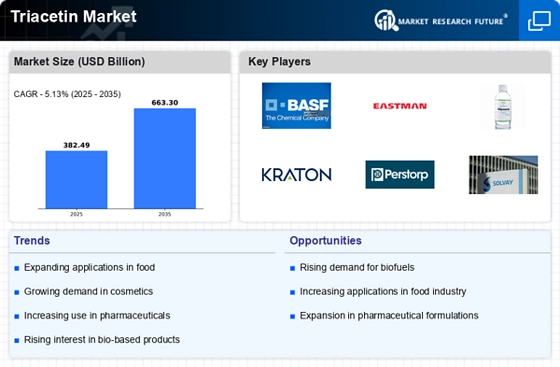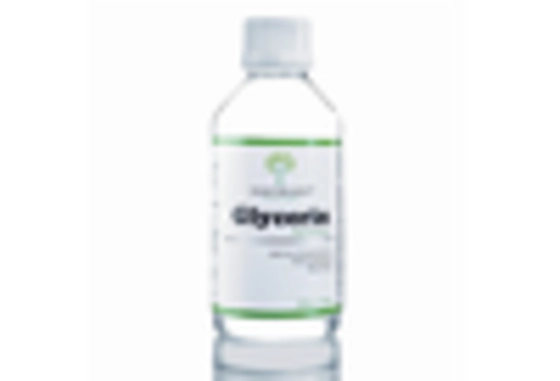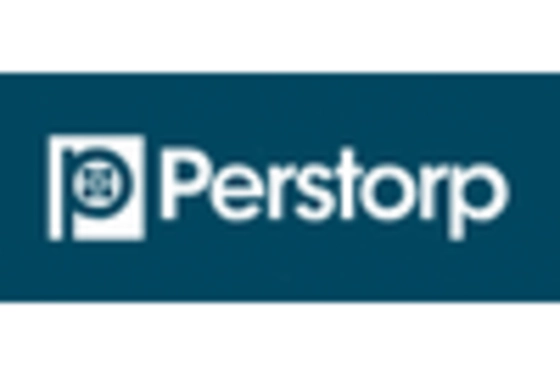Sustainability Initiatives
The Triacetin Market is also being shaped by sustainability initiatives, as manufacturers seek eco-friendly alternatives to traditional chemical compounds. Triacetin Market, derived from renewable sources, presents a viable option for companies aiming to reduce their environmental footprint. The increasing regulatory pressure for sustainable practices is prompting industries to adopt greener solutions, which may lead to a surge in demand for Triacetin Market. As the market for sustainable chemicals is projected to grow significantly, the Triacetin Market stands to benefit from this shift towards environmentally responsible products. This trend suggests a potential for innovation and growth within the industry.
Rising Demand in Food Industry
The Triacetin Market is significantly influenced by the rising demand in the food sector, where Triacetin Market is employed as a food additive and flavoring agent. Its ability to act as a solvent for flavors and enhance the stability of food products makes it a valuable ingredient. The food additives market is expected to reach USD 50 billion by 2025, with Triacetin Market playing a pivotal role in this growth. As food manufacturers increasingly focus on improving product quality and shelf life, the demand for Triacetin Market is likely to rise. This trend indicates a promising outlook for the Triacetin Market, as it aligns with consumer preferences for enhanced food experiences.
Growth in Personal Care Products
The Triacetin Market is witnessing growth fueled by the increasing use of Triacetin Market in personal care products. As consumers become more conscious of product ingredients, manufacturers are seeking safer and more effective formulations. Triacetin Market is utilized as a moisturizer and emollient in cosmetics and skincare products, contributing to a smoother texture and enhanced product performance. The personal care market is projected to grow at a CAGR of 5.5% through 2027, indicating a robust demand for ingredients like Triacetin Market. This trend suggests that the Triacetin Market will benefit from the rising consumer preference for high-quality personal care products, further driving its market potential.
Technological Advancements in Production
Technological advancements in the production of Triacetin Market are poised to drive the Triacetin Market forward. Innovations in manufacturing processes, such as improved synthesis methods and enhanced purification techniques, are likely to increase production efficiency and reduce costs. These advancements may lead to a more competitive market landscape, enabling manufacturers to meet the growing demand across various sectors. As production capabilities expand, the Triacetin Market could see a rise in supply, which may further stimulate market growth. This trend indicates that ongoing research and development efforts will play a crucial role in shaping the future of the Triacetin Market.
Expanding Applications in Pharmaceuticals
The Triacetin Market is experiencing a notable expansion due to its increasing applications in the pharmaceutical sector. Triacetin Market serves as a plasticizer and solvent in various drug formulations, enhancing the bioavailability of active ingredients. The demand for innovative drug delivery systems is on the rise, with the market for pharmaceutical excipients projected to reach USD 8 billion by 2026. This growth is likely to drive the need for Triacetin Market, as it plays a crucial role in improving the stability and efficacy of medications. Furthermore, the ongoing research into novel drug formulations suggests that Triacetin Market's versatility will continue to be leveraged, thereby solidifying its position within the Triacetin Market.


















Leave a Comment